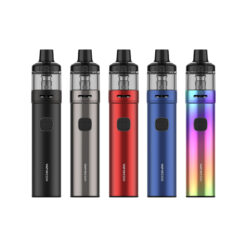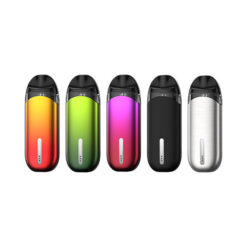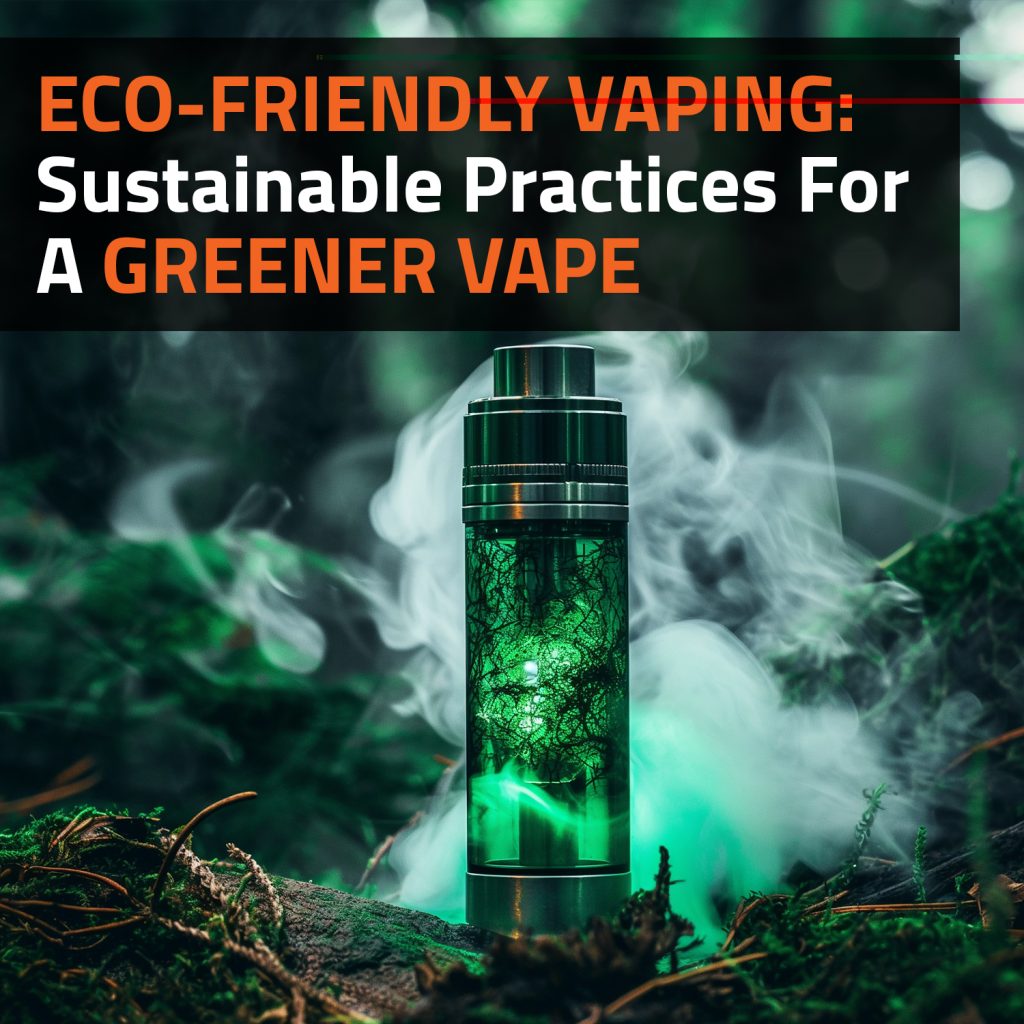In an era where environmental consciousness is increasingly becoming a focal point of global discussions, even seemingly innocuous habits such as vaping are under scrutiny for their ecological footprint. As the popularity of vaping continues to soar, it is crucial to address the environmental implications of this burgeoning industry.
We will delve into the realm of “Eco-Friendly Vaping,” exploring sustainable practices that aim to mitigate the environmental impact associated with traditional vaping. From the materials used in vape products to the disposal of e-waste, this article investigates the various facets of the vaping industry’s environmental impact and highlights innovative solutions and practices that pave the way for a greener and more sustainable vaping future.
The Environmental Impact Of Traditional Vaping
The environmental impact of traditional vaping encompasses a range of concerns that span from the production and disposal of vaping devices to the manufacturing processes and materials used in e-liquids. One significant aspect is the creation and disposal of electronic waste (e-waste). Vape pens, batteries, and cartridges contribute to the mounting e-waste problem globally, as many of these devices are not easily recyclable. The extraction, processing, and transportation of materials used in vape products also contribute to carbon emissions and resource depletion.
Moreover, the disposal of used vape cartridges, often containing hazardous materials like lithium-ion batteries, poses environmental risks. Additionally, the production of e-liquids involves various chemicals and processes that can have adverse effects on air and water quality if not managed responsibly. By examining the entire lifecycle of traditional vaping, from production to disposal, it becomes evident that addressing these environmental concerns is imperative for the industry’s sustainable evolution.
Sustainable Materials In Vape Products
The quest for sustainability in the vaping industry has led to a growing focus on using eco-friendly and sustainable materials in the production of vape products. Traditional vape devices often involve the use of materials that may have adverse environmental impacts during their extraction, processing, and disposal. However, a shift towards sustainability involves opting for materials that are renewable, recyclable, and have a reduced ecological footprint.
One notable advancement is the exploration of biodegradable and compostable materials for components like vape cartridges and packaging. Manufacturers are increasingly experimenting with materials derived from plant-based sources, such as bioplastics, which have the potential to break down naturally, reducing the long-term environmental impact.
Furthermore, the move towards reusable and refillable vaping devices has gained traction. Rechargeable batteries and refillable tanks not only reduce the generation of electronic waste but also encourage a more sustainable and cost-effective approach for consumers. Sustainable materials, coupled with designs that facilitate easy disassembly for recycling, are becoming integral aspects of eco-friendly vape product development.
Recycling And Disposal Solutions For Vape Products
Recycling and proper disposal solutions for vape products are critical components in mitigating the environmental impact of the vaping industry. As electronic cigarette usage continues to rise, finding sustainable ways to manage the end-of-life cycle of vape devices and components is essential.
Battery Recycling Programs
- Vape devices often contain rechargeable batteries, typically lithium-ion. Establishing battery recycling programs encourages users to responsibly dispose of spent batteries.
- Many electronic retailers and recycling centres now accept used batteries, providing a convenient and environmentally friendly option for users to discard their old vape batteries.
E-Waste Collection Centres
- E-waste collection centres play a crucial role in responsible disposal of vape devices.
- Users are encouraged to drop off their old or non-functional vape pens, cartridges, and other electronic components at designated e-waste collection points, preventing these items from ending up in landfills.
Mail-Back Programs
- Some vape manufacturers and retailers have implemented mail-back programs.
- Users can return their used vape products by mail to designated recycling facilities, ensuring that these items are properly processed and recycled.
Material Separation For Recycling
- Designing vape products with easy disassembly features facilitates material separation for recycling purposes.
- Separating metal, plastic, and other materials at the end of a product’s life allows for more efficient recycling processes, reducing waste and promoting resource recovery.
Biodegradable Cartridges And Packaging
- Manufacturers are exploring the use of biodegradable materials for vape cartridges and packaging.
- Biodegradable components break down naturally, reducing the environmental impact and offering a more sustainable option for users concerned about the disposal of their vape products.
Education And Awareness Campaigns
- Increasing awareness among users about the importance of proper disposal is crucial.
- Educational campaigns can inform vapers about recycling options, the environmental consequences of improper disposal, and the benefits of choosing products with recyclable or biodegradable materials.
Legislation And Regulations
- Governments can play a pivotal role by implementing and enforcing regulations related to e-waste disposal.
- Legislation can incentivise manufacturers to adopt environmentally friendly practices and provide guidelines for proper disposal methods.
Collaboration With Retailers
- Collaborating with vape retailers to promote recycling initiatives can enhance accessibility for users.
- Offering incentives, such as discounts on new products or recycling programs, can encourage users to participate in responsible disposal practices.
Consumer Awareness And Responsible Vaping Habits
Consumer awareness and responsible vaping habits are crucial elements in fostering a more sustainable and environmentally conscious vaping culture. By educating users about the environmental impact of vaping and promoting responsible practices, the industry can work towards minimising its ecological footprint.
Understanding The Environmental Impact
Consumers need to be informed about the environmental consequences of vaping, including the production of e-waste, the potential for chemical pollution, and the impact on biodiversity. Awareness campaigns can highlight the lifecycle of vape products and the role consumers play in mitigating environmental harm.
Choosing Sustainable Products
Informed consumers can make more sustainable choices by selecting vaping products with eco-friendly features. Opting for devices made from recyclable or biodegradable materials and supporting brands committed to sustainability sends a message to the industry about the importance of environmental responsibility.
Proper Disposal Practices
Consumers should be educated on the proper disposal methods for vape products, including recycling options and designated e-waste drop-off locations. Clear instructions on how to disassemble and recycle different components can empower users to take responsible actions when retiring their vaping devices.
Reducing Single-Use Products
Encouraging the use of refillable and reusable vaping devices helps reduce the generation of single-use waste. Consumers can opt for devices with refillable tanks and rechargeable batteries, minimising the need for constant replacement and disposal of disposable products.
-
UWELL Caliburn X Pod System
R625.00Original price was: R625.00.R399.00Current price is: R399.00. -
Uwell Caliburn A3 Pod Kit
R450.00Original price was: R450.00.R300.00Current price is: R300.00. -
Vaporesso GTX GO 40 Kit
R395.00 -
Vaporesso Zero S Kit
R420.00
Participating In Recycling Programs
Consumers should be made aware of and encouraged to participate in recycling programs offered by manufacturers, retailers, or local authorities. Providing convenient options for users to return their used vape products for proper recycling can significantly increase participation rates.
Promoting A Circular Economy Mindset
Educating users about the concept of a circular economy emphasises the importance of recycling and reusing materials. Consumers can be encouraged to view vape products as resources that can be repurposed, recycled, or returned to the manufacturer for responsible disposal.
Spreading Awareness Through Social Channels
Social media platforms and online communities can be effective channels for spreading awareness about responsible vaping habits. Engaging influencers, advocacy groups, and users in conversations about environmental sustainability helps create a collective understanding and commitment to responsible practices.
Staying Informed About Regulations
Consumers should stay informed about local regulations regarding e-waste disposal and recycling. Understanding and adhering to existing regulations ensures that consumers are aligned with broader efforts to manage the environmental impact of vaping.
The landscape of vaping is undergoing a transformative journey towards sustainability, marked by innovative solutions and heightened awareness. From the adoption of eco-friendly materials in vape products to the implementation of recycling initiatives, the industry is gradually recognising its responsibility to minimise environmental impact. The consequences of vape waste on biodiversity and ecosystems underscore the urgency for collective action and responsible consumer habits.
By embracing recycling, reducing single-use products, and fostering consumer awareness, we pave the way for a more sustainable vaping future – one where enjoyment is not at the expense of the environment, but rather in harmony with it. As the industry continues to evolve, the commitment to ecological responsibility ensures that the pleasures of vaping align with a shared vision for a healthier planet.










